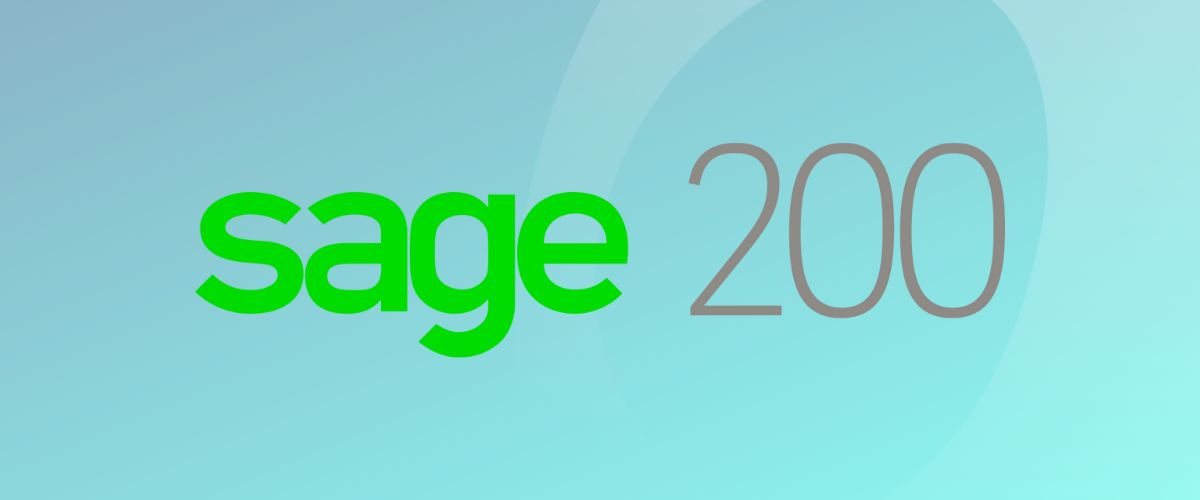Sage Intacct and Sage 200 are both trusted financial management solutions — but which one is right for your business? Explore the key differences here.
Selecting a financial management system means finding software that supports your operations, reporting needs, and long-term growth. With so many options available, it’s important to choose a solution that fits the way your business works — both today and in the future. For some businesses, that’s Sage Intacct or Sage 200.
Both solutions are designed to improve financial control and efficiency, but they take very different approaches. Sage Intacct is a cloud-native platform built for businesses that need automation, multi-entity consolidation, and real-time financial insights. Sage 200, on the other hand, is a solid choice for companies managing inventory-heavy operations and preferring a more traditional, on-premises or hybrid setup.
Understanding these differences is essential when selecting the right system. This comparison breaks down the key factors to help you decide which solution best supports your business.
|
Feature
|
Sage Intacct
|
Sage 200
|
|
Deployment
|
Fully cloud-based
|
On-premises or hybrid
|
|
Financial Management
|
Advanced AI-driven automation, multi-entity consolidation
|
Core financials with customisable reporting
|
|
Scalability
|
Highly scalable, with modular add-ons
|
Works well for structured businesses but less flexible
|
|
Automation
|
AI-powered insights and automation
|
Basic automation
|
|
Security & Compliance
|
SOC 2-certified, global compliance
|
UK/EU-focused compliance, limited cloud security
|
Book a free Discovery Call here to learn more
Overview of Sage Intacct and Sage 200
Sage Intacct
 Sage Intacct is a cloud-based financial management system designed for mid-sized and growing businesses of any industry. It provides advanced automation, real-time financial insights, and multi-entity consolidation, making it ideal for organisations with basic or complex financial operations alike.
Sage Intacct is a cloud-based financial management system designed for mid-sized and growing businesses of any industry. It provides advanced automation, real-time financial insights, and multi-entity consolidation, making it ideal for organisations with basic or complex financial operations alike.
Because it is fully cloud-native, Sage Intacct offers secure access from any location, eliminating the need for on-premises infrastructure. Its AI-driven automation reduces manual tasks, while its powerful reporting tools help finance teams make faster, data-driven decisions. With modular functionality, businesses can tailor Sage Intacct to their exact needs, scaling effortlessly as they grow.
Sage 200
 Sage 200 is an older financial and operational management system originally designed for businesses that need both accounting and stock control. It is available as an on-premises or hybrid cloud solution, providing greater flexibility for companies that require a more traditional deployment model.
Sage 200 is an older financial and operational management system originally designed for businesses that need both accounting and stock control. It is available as an on-premises or hybrid cloud solution, providing greater flexibility for companies that require a more traditional deployment model.
Sage 200 was favoured by businesses managing inventory, manufacturing, or supply chain processes. It offers structured financial management, strong reporting capabilities, and integration with stock and operational workflows. While it provides some automation, it lacks the AI-powered capabilities of Sage Intacct, and organisations are finding that they're starting to outgrow their Sage 200 system.
Book a free 15-minute Discovery Call
Key Differences Between Sage Intacct and Sage 200
 Sage Intacct and Sage 200 are built for different business needs, so it comes down to what your business needs today — and how you plan to grow in the future. While both provide strong financial management, they differ in deployment, automation, scalability, reporting, and compliance.
Sage Intacct and Sage 200 are built for different business needs, so it comes down to what your business needs today — and how you plan to grow in the future. While both provide strong financial management, they differ in deployment, automation, scalability, reporting, and compliance.
To help you decide, here’s a breakdown of how the two systems compare in deployment, automation, scalability, reporting, and compliance:
1. Deployment and accessibility
- Sage Intacct is a fully cloud-based system, meaning there is no need for on-premises servers or local installations. Users can access the platform from anywhere with an internet connection, making it ideal for remote teams and multi-location businesses. Updates are automatic, ensuring access to the latest features without IT intervention.
- Sage 200 offers both on-premises and hybrid cloud options. While this provides flexibility, it also requires more IT management. Businesses using Sage 200 must maintain infrastructure, and updates are not as seamless as with a cloud-native solution.
2. Financial management and reporting
- Sage Intacct provides real-time financial insights with dashboards, AI-driven automation, and multi-entity consolidation. It streamlines complex financial structures and supports businesses managing multiple subsidiaries, currencies, or locations.
- Sage 200 delivers core financial management with robust but traditional reporting. While it offers some flexibility in reporting structures, it does not have Sage Intacct’s real-time dashboards or AI-powered analytics.
3. Scalability and growth potential
- Sage Intacct is designed for growing businesses that need a system that scales with them. It offers modular add-ons, integrations, and automation to handle increasing complexity.
- Sage 200 is well-suited for businesses with structured processes but is less adaptable to rapid scaling. Expanding businesses may find its limitations in automation and reporting restrictive over time.
4. Automation
- Sage Intacct leverages AI-driven automation for tasks like transaction matching, approvals, and forecasting. This reduces manual effort and improves efficiency.
- Sage 200 includes standard automation features but does not use AI-powered enhancements for financial processes.
5. Compliance and security
- Sage Intacct is SOC 2-certified and compliant with global accounting standards, making it a strong choice for businesses needing high security and regulatory compliance.
- Sage 200 meets UK and EU compliance standards, but its security features are not as advanced as Sage Intacct’s fully cloud-native protections.
Which Solution Is Right for Your Business?
 Sage Intacct is the perfect choice for any business that needs a modern, scalable financial management system. Its cloud-first design, AI-powered automation, and advanced reporting give finance teams the control and visibility needed to make faster, more strategic decisions.
Sage Intacct is the perfect choice for any business that needs a modern, scalable financial management system. Its cloud-first design, AI-powered automation, and advanced reporting give finance teams the control and visibility needed to make faster, more strategic decisions.
Sage 200, by comparison, is an older system with limitations. While it has been a reliable option for years, it lacks the real-time automation, scalability, and depth that businesses require today.
For stock-intensive operations, Sage Intacct’s dedicated inventory module provides accurate stock tracking, automated workflows, and seamless financial integration with other business systems — without the constraints of an on-premises or hybrid system.
With Sage 200, businesses will still face manual processes, limited automation, and infrastructure requirements that slow down financial operations. As more finance teams move toward cloud-based solutions, Sage Intacct really is the only option that delivers long-term efficiency, automation, and control for you and your finance team.
Final Thoughts

Upgrading your financial management system is a strategic decision that impacts efficiency, accuracy, and long-term growth. Sage Intacct provides the automation, real-time insights, and scalability that modern businesses need. Its cloud-first design, AI-driven reporting, and advanced stock management capabilities make it the strongest choice for companies looking to streamline operations and stay ahead.
Sage 200, while still in use, lacks the depth and flexibility required to support growing and complex businesses. With limited automation and an ageing framework, it falls short compared to a fully cloud-based, future-ready solution like Sage Intacct.
So, if you’re looking for a modern financial management system that works for you rather than against you, Sage Intacct is definitely the right choice. Want to learn more? We’re more than happy to answer any questions you have. All you need to do is book a call with us using the button below!
Book your free Discovery Call here